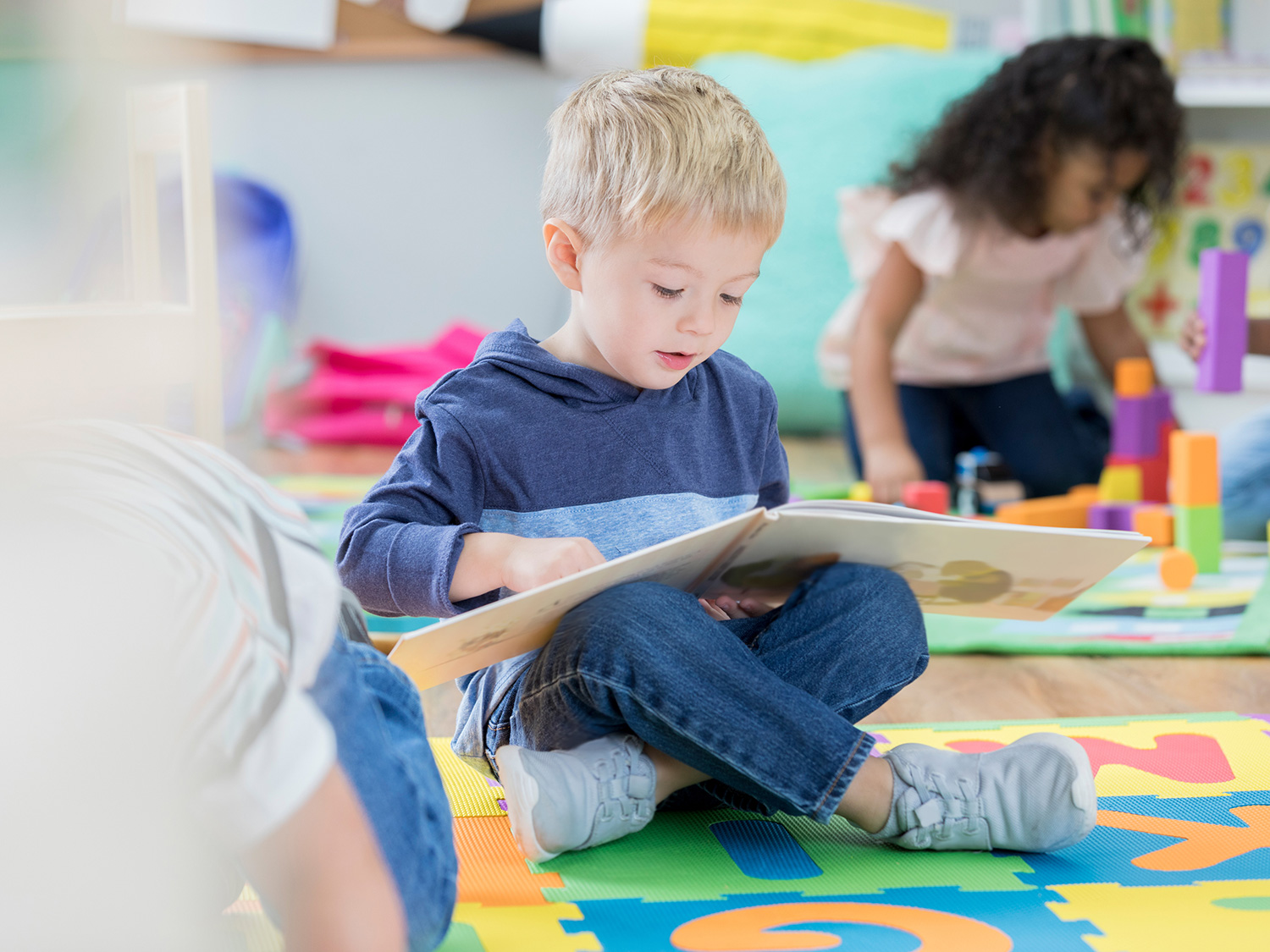Preschool teachers develop literacy by continually exposing children to oral and written language, and by building on prior knowledge and language experiences. Pictures, play, and the printed word combine with oral language to help your child understand the symbolic representation that underlies preschool reading and writing. Her teacher will use a variety of fun, engaging strategies in the classroom to develop preschool reading, such as:
- Reading aloud: A small group of children cluster around their teacher in the reading corner, listening intently as she reads The Cat in the Hat. She holds up the book so they can see the illustrations and talk about them. The teacher asks questions about the story and the children make predictions about what will happen next. By actively participating in the story, children acquire skills that will promote success in preschool reading.
- Poetry: Nursery rhymes, songs, and poetry are key parts of preschool reading. Listening to, and repeating, poetry is a wonderful way for children to learn phonemic awareness. That is the ability to notice and isolate the individual sounds, or phonemes, in words, like the "c" in cat or the "b" in bat — a key skill for success in preschool reading. Preschoolers first learn that speech is made up of sounds, syllables, and words indirectly from listening to stories, nursery rhymes, poetry, and conversations.
- Storytelling: Listening teaches story structure and helps children learn to predict outcomes. One advantage of storytelling (versus reading aloud from a book) is that you can change the story depending on how the children respond.
- The printed word: To understand how print works, preschoolers need to be surrounded by it — in books and magazines, in signs around the classroom, on bulletin boards, in labels on their clothes and possessions. They need to learn that written words correspond to spoken words, that words are composed of letters, and that sentences are made up of words with spaces between the words.
- The alphabet: Alphabet books and puzzles help children learn the relationship between sounds and letters, and give them practice recognizing and distinguishing letters.
- Writing and invented spelling: Writing is a key part of preschool reading. At preschool, your child will be encouraged to write captions for his pictures, to write stories about what he's drawn, and to tell stories based on his experiences and imagination.
- Dramatic play: Children exercise their imaginations, practice their communication skills, and learn the subtleties of spoken language in dramatic play and dress-up games.
- Computers: A computer can be an important tool for children in learning to write. Because their small motor control is still developing, preschoolers often find it easier to find the letters they are looking for on the keyboard than to use a pencil to form them. The teacher will help them search for letters in the beginning and encourage them to read the words they are writing and then print them out.

